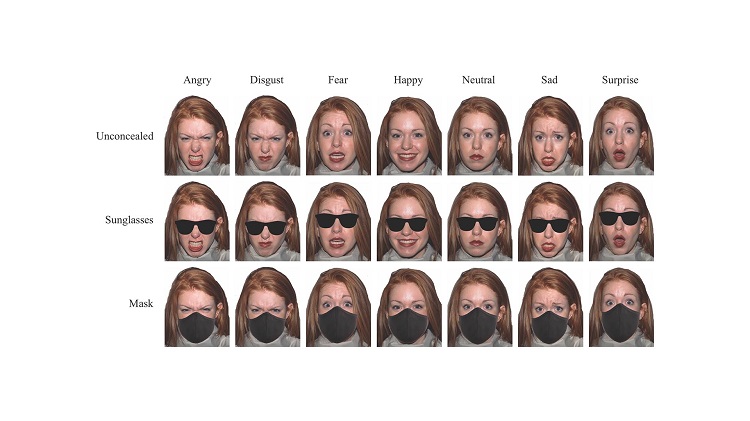
Dr Eilidh Noyes
Senior Lecturer in Cognitive Psychology
Dr Noyes' previous work includes studies on how even the simplest of disguises can fool people, and the effects of distance from subject to camera on facial recognition.
A new study led by the University of Huddersfield’s Dr Eilidh Noyes has found that face masks, so prevalent during the pandemic, do present a challenge for face identification but that it is only slightly harder to recognise a face behind a mask than a face in sunglasses.
But the study also shows for the first time that performance may be improved by using super recognisers – people who are very skilled at recognising faces. It also reveals that masks do make recognising someone’s emotions more difficult.
There are many questions surrounding face masks and the impact that masks will have on face identification. Can we recognise the faces of people who we know well if they are wearing a mask? And, relevant to policing and security scenarios or a supermarket ID check, can an unfamiliar face be recognised across images if it is masked? And how do masks impact our ability to recognise a person’s emotions?
Dr Noyes is Senior Lecturer in Cognitive Psychology and conducted the study, published by the Royal Society, in collaboration with researchers at the University of Greenwich, University of Reading, and University of Lincoln. A leading expert in the field, Dr Noyes was intrigued what impact the enforced wearing of masks due to COVID-19 would have on facial recognition.
Familiarity and emotions put to the test
The study consisted of three experiments which tested recognition of familiar faces, recognition of an unfamiliar face (comparing images, aka face matching), and emotion recognition. The researchers compared face recognition and emotion recognition for faces with no concealment, faces in masks, and faces in sunglasses – something far more commonplace than masks and often a matter of choice rather than necessity.
In the first experiment, participants were presented with pairs of famous faces, and were asked to decide if the images were of the same person or two different people.
“People are typically very good at identifying the faces of people they know well,” says Dr Noyes. “However, we found that face masks reduced accuracy on this task. There was no difference in accuracy for faces in masks compared to faces in sunglasses. Accuracy on the familiar face recognition task remained high - around 90% - even for faces in masks.

“Face comparisons are much more difficult if the faces are unknown to the identifier, but it is this task which mimics what can happen in many security scenarios. In the unfamiliar face comparison task, both masks and sunglasses reduced identification accuracy. Masks impaired performance the most, but only a little more than sunglasses.” This difference in recognition was at only around 3%.
Masks present no problem for super recognisers
A group of people who were known to be ‘super recognisers’ also took part in the task. Super recognisers have an exceptional natural ability for recognising a face, an ability that only 2% of the population have.
Super recognisers outperformed typical observers for unconcealed faces, faces in masks, and faces in sunglasses, showing that they still outperform typical observers even when looking at concealed faces. This study is the first to test the performance of super recognisers for faces in masks.

What about the recognition of a person’s emotional expressions? Participants in the study viewed face images and were asked to decide which emotion had been displayed.
“The effect of masks on emotion categorisation was more complex than the results for the recognition task,” Dr Noyes explains. “The emotions ‘happiness’, ‘disgust’ and ‘surprise’ were particularly difficult to recognise when the faces were in masks, but the recognition of the emotions ‘anger’ and ‘fear’ were impaired by both masks and sunglasses.”
Dr Noyes continues, “The results of the study show that the lower half of the face is important for face identification and emotion recognition. It’s not all in the eyes!”
Dr Noyes’ co-authors on the study are:
Prof. Josh Davis, University of Greenwich
Nikolay Petrov, University of Greenwich
Dr Katie Gray, University of Reading
Dr Kay Ritchie, University of Lincoln
{{item.title}} - News Story
